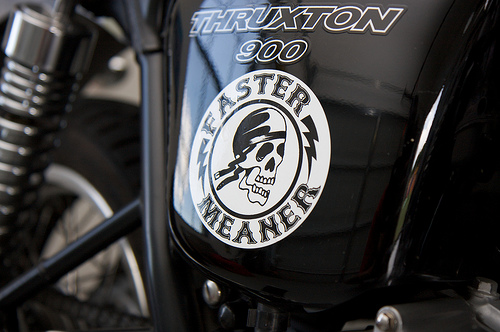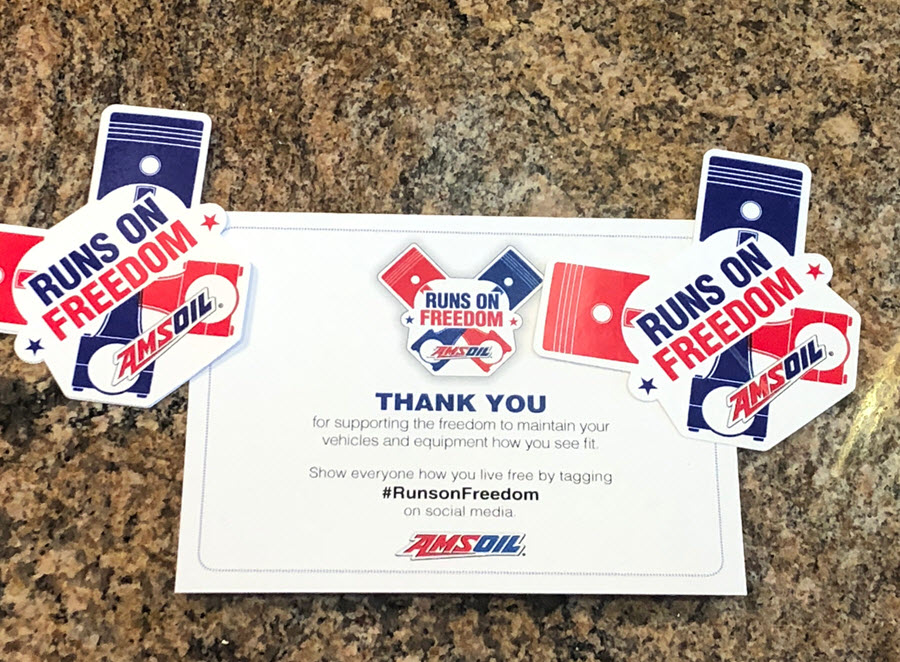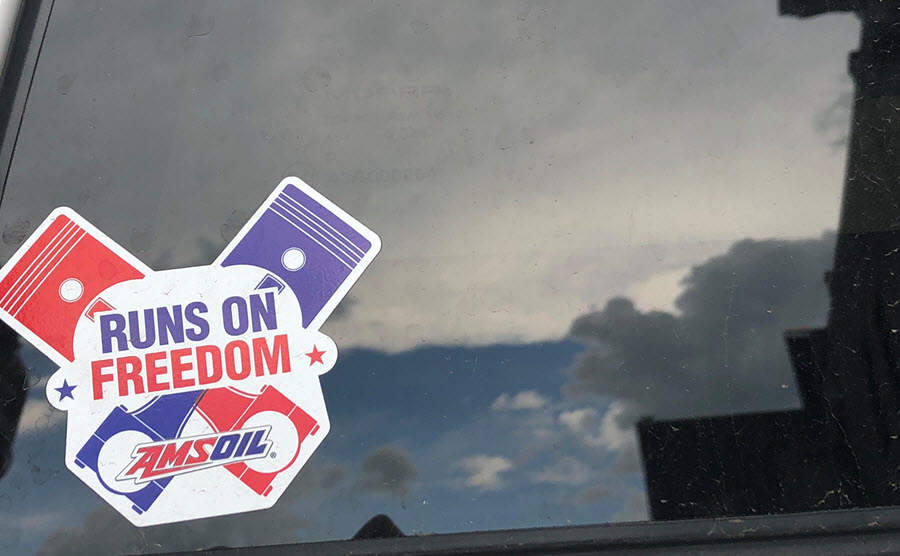Warranties are the thing you sign on the way to get the cool thing you want. Few of us read them. Fewer still understand their finer points and implications, but if actively leveraged, warranties can play a significant role in marketing.
Imagine you are asked to make your standard warranty into a conversation piece because of its point of friction on the path to purchase. How do you go about turning boring legalese into a point of differentiation?
The Challenge: Raising Customer Awareness About a Mundane-But-Important Topic
Two months ago we sat around a conference table and asked ourselves how we could raise awareness around our pretty boring warranty claim.
Changing the narrative around the warranty mattered because we sell aftermarket engine lubricants (motor oils and such), and manufacturers of the markets we catered to (specifically the power sports market) would discourage customers from using any brand but theirs. In the tech space, this could be akin to hardware manufacturers telling the customer to use their software if they want to preserve their computers.
In our market, the scenario we often came across was the potential customer having shelled out some serious cash to buy a cool new toy like a snowmobile or dirt bike, would then be asked to sign a pretty hefty document. This document would strongly suggest that that individual should be wary of using any other lubricants in their new toy.
The bottom line message strongly delivered: Use the manufacturer's brand. Only. Ever.
Not a big deal, unless you are the manufacturer of aftermarket lubricants for the toy. By the way, that message is crap. You are free to use whatever lubricant you want (it is your property after all).
Also, it is illegal. There is a law ( The Magnusson Moss Act of 1975) that protects consumers' warranty claims. In the aftermarket lubricant market, the Act makes it illegal for companies to void your warranty or deny coverage simply because you used an aftermarket or recycled part. But unless you are following the finer points of warranties or aftermarket lubrication, and who wants to cozy up to a textbook on that, you won't want to break your warranty coverage. You won’t even consider it, even if the aftermarket lubricant might provide better protection and performance.
The Problem is, how do you make a warranty claim interesting or even sexy?
A web page or card arguing that your manufacturer can't void your warranty for "blah" "blah" "blah" is bound to get very little traction. That makes building a content marketing strategy tough.
Leveraging Content Marketing to Make a “Dry” Topic More Interesting
1. Explore What the Messaging Is In the Current Space
In our case, we went back to customer stories and our buyer personas to figure out how can we fit the language to resemble that with which the customer is already familiar and comfortable.
 Triumph Motorcycle Decal - Travis Isaacs
Triumph Motorcycle Decal - Travis Isaacs
The messaging our target audience resonated with was edgy, fun and exciting. The Powersports manufacturers ran messages that scored high on attitude and the desire for freedom.
 Truck Decal -Wonderlane
Truck Decal -Wonderlane
We surmised that our warranty message was pretty bland/generic/standard. To create a compelling message, we either had to restructure our message or be exceptional. When we reviewed the market, our warranty was not exceptional, and since we had no plans to change it, our messaging had to change.
2. Think of Ways to Integrate Your Content With Your Customers' Behaviors
The challenge we had was driving people to our website page, or to watch a video about warranties. So, we had to repackage the message in a tone customers could understand and appreciate. A cool/robust landing page was out of the question since our web development team had other priorities. The content had to be compelling.
3. Think About Closing the Loop in Reporting
We proactively tackled the question every content marketer deals with, “Did it drive sales?” by aligning with a different conversion metric — the visitor to lead conversion. We knew it wasn’t enough to just drive traffic to the landing page, or get views on the video. We anticipated the next question would be: “Then what?” To that end, we needed a way to entice people to complete an action tied to a conversion.
The "Runs on Freedom" Campaign
We built a campaign that incorporates website video and social.
The message Runs on Freedom, tied into the customer’s perception about themselves, their toys, popular messaging in the current space, channels for delivering content (online and offline – conversations happen in both channels) and mapping the journey into our buying process.
 Runs on Freedom Swag
Runs on Freedom Swag
Our campaign incorporated:
Educational PSA-Style videos talking about the customer’s rights that ran on our social media and YouTube channels. A refreshed warranty page that leads with the campaign and covered the legalese in a much more approachable (and skimmable) manner. A social media paid campaign targeting people that liked or followed the top power sports brands. A YouTube ad campaign targeting videos reviewing new releases. Free Runs on Freedom decals that visitors could request on our page, to stick on their Powersports equipment (our visitor-to-lead conversion tactic).The Result: The Campaign Was a Success and a Failure
During the period we ran the campaign, traffic to our guarantee page skyrocketed! The first spike came during our initial ad campaign which we turned on for a few days and had to shut off shortly thereafter. The second spike followed our second social ad campaign. During this time, unique pageviews show up by 305% YOY the average time on the page improved from 48 seconds to 3 minutes and 3 seconds (235%), and the bounce rate dropped from 19.67% to 9.26%.
 Traffic to our Warranty Page
Traffic to our Warranty Page
We generated over 600 new leads in three weeks from people who had watched the video and wanted a decal. The project exceeded expectations by not only increasing awareness around our Warranty message but also recruiting customers as evangelists to help us spread the message.
 Freedom Decal on a Truck
Freedom Decal on a Truck
Where I Failed: Planning Beyond Execution
My job as a digital marketer in this scenario was to create the campaign and leverage it to build awareness and generate leads. However, I failed in one vital area: Decal Fulfillment. Our initial batch of decals ran out in the first week. The second batch, which arrived a few weeks later, also quickly ran out. The number of requests we received flooded our order fulfillment team, which had competing priorities, we had to taper down the campaign until a solution was developed.
The success of the campaign was therefore diminished. We couldn’t promote our messaging as thoroughly as we desired. A key takeaway: when building campaigns, focus on end-to-end fulfillment, not just the first steps. It takes a village.
Innovative SEO services
SEO is a patience game; no secret there. We`ll work with you to develop a Search strategy focused on producing increased traffic rankings in as early as 3-months.
A proven Allinclusive. SEO services for measuring, executing, and optimizing for Search Engine success. We say what we do and do what we say.
Our company as Semrush Agency Partner has designed a search engine optimization service that is both ethical and result-driven. We use the latest tools, strategies, and trends to help you move up in the search engines for the right keywords to get noticed by the right audience.
Today, you can schedule a Discovery call with us about your company needs.
Source:





